Author Photo And Bio
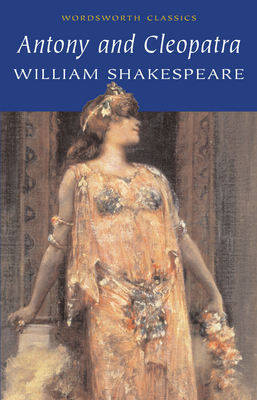 1. Antony and Cleopatra by William Shakespeare (1606). One of Shakespeare’s late Roman plays, Antony and Cleopatra has a sense of fading grandeur about it, as the great warrior Antony succumbs to the exotic luxuries of Egypt and the heady sexual powers of her queen Cleopatra, thus neglecting his duties to Rome. The play has a kind of baroque richness to both plot and language as Antony and Cleopatra delight in seclusion while the Roman forces opposing them, led by the sober and ambitious Octavius Caesar, close in on the lovers. Cornered, the emperor and queen bring the play to a suicidal climax that exquisitely fuses sexual pleasure and death.
1. Antony and Cleopatra by William Shakespeare (1606). One of Shakespeare’s late Roman plays, Antony and Cleopatra has a sense of fading grandeur about it, as the great warrior Antony succumbs to the exotic luxuries of Egypt and the heady sexual powers of her queen Cleopatra, thus neglecting his duties to Rome. The play has a kind of baroque richness to both plot and language as Antony and Cleopatra delight in seclusion while the Roman forces opposing them, led by the sober and ambitious Octavius Caesar, close in on the lovers. Cornered, the emperor and queen bring the play to a suicidal climax that exquisitely fuses sexual pleasure and death.
 2. Emma by Jane Austen (1816). The story of Miss Woodhouse —busybody, know-it-all, and general relationship enthusiast —is a comedy of manners deftly laced with social criticism. The charm largely inheres in Emma’s imperfections: her slightly spoiled maneuverings, her highly fallible matchmaking, her inability to know her own heart. Emma teeters from lovable one moment to tiresome and self-centered the next. In writing her story, Austen found an ideal venue for her note-perfect, never-equaled archness.
2. Emma by Jane Austen (1816). The story of Miss Woodhouse —busybody, know-it-all, and general relationship enthusiast —is a comedy of manners deftly laced with social criticism. The charm largely inheres in Emma’s imperfections: her slightly spoiled maneuverings, her highly fallible matchmaking, her inability to know her own heart. Emma teeters from lovable one moment to tiresome and self-centered the next. In writing her story, Austen found an ideal venue for her note-perfect, never-equaled archness.
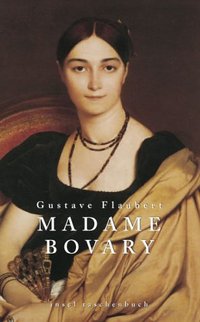 3. Madame Bovary by Gustave Flaubert (1857). Of the many nineteenth-century novels about adulteresses, only Madame Bovary features a heroine frankly detested by her author. Flaubert battled for five years to complete his meticulous portrait of extramarital romance in the French provinces, and he complained endlessly in letters about his love-starved main character — so inferior, he felt, to himself. In the end, however, he came to peace with her, famously saying, “Madame Bovary: c’est moi.” A model of gorgeous style and perfect characterization, the novel is a testament to how yearning for a higher life both elevates and destroys us.
3. Madame Bovary by Gustave Flaubert (1857). Of the many nineteenth-century novels about adulteresses, only Madame Bovary features a heroine frankly detested by her author. Flaubert battled for five years to complete his meticulous portrait of extramarital romance in the French provinces, and he complained endlessly in letters about his love-starved main character — so inferior, he felt, to himself. In the end, however, he came to peace with her, famously saying, “Madame Bovary: c’est moi.” A model of gorgeous style and perfect characterization, the novel is a testament to how yearning for a higher life both elevates and destroys us.
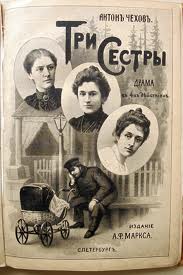 4. The Three Sisters by Anton Chekhov (1901). In this gloomy Russian drama, the youthful hopes of siblings Olga, Masha, and Irina Prozorov curdle with time into the desperate sins and bitter resentments of later life. Often called a play in which nothing happens, The Three Sisters —one of four major dramas written by Chekhov at the end of his life —is actually a masterly study in dramatic texture, its voices and themes counterpointing each other as if they were notes in an orchestral piece.
4. The Three Sisters by Anton Chekhov (1901). In this gloomy Russian drama, the youthful hopes of siblings Olga, Masha, and Irina Prozorov curdle with time into the desperate sins and bitter resentments of later life. Often called a play in which nothing happens, The Three Sisters —one of four major dramas written by Chekhov at the end of his life —is actually a masterly study in dramatic texture, its voices and themes counterpointing each other as if they were notes in an orchestral piece.
 5. The Aeneid by Virgil (19 b.c.e.). Like Achilles and Odysseus before him, Aeneas makes sacrifices for friendship and descends into the world of the dead, but he never finds peace or a true home. Aeneas does find support and love from the Queen of Carthage, Dido, but he flees in the night, abandoning her to suicide, overthrowing comfort and home to remain true to his quest (and the spell of the gods) to found the city of Rome.
5. The Aeneid by Virgil (19 b.c.e.). Like Achilles and Odysseus before him, Aeneas makes sacrifices for friendship and descends into the world of the dead, but he never finds peace or a true home. Aeneas does find support and love from the Queen of Carthage, Dido, but he flees in the night, abandoning her to suicide, overthrowing comfort and home to remain true to his quest (and the spell of the gods) to found the city of Rome.
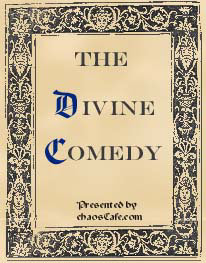 6. The Divine Comedy by Dante Alighieri (1321). Dante’s poetic trilogy traces the journey of a man’s soul from darkness (The Inferno) to the revelation of divine light (Paradiso) while providing commentary and gossip about the politics and prominent families of Florence. Led in his pilgrimage through the underworld and purgatory by the Greek poet, Virgil, Dante is escorted into paradise by his early beloved, Beatrice, while learning that, in order to ascend, he must be transformed.
6. The Divine Comedy by Dante Alighieri (1321). Dante’s poetic trilogy traces the journey of a man’s soul from darkness (The Inferno) to the revelation of divine light (Paradiso) while providing commentary and gossip about the politics and prominent families of Florence. Led in his pilgrimage through the underworld and purgatory by the Greek poet, Virgil, Dante is escorted into paradise by his early beloved, Beatrice, while learning that, in order to ascend, he must be transformed.
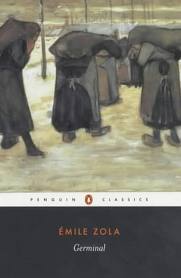 7. Germinal by Émile Zola (1884). As in old pictures of Pittsburgh, a pall of industrial smoke seems to hang over Zola’s grim, stirring novel about a miners strike. Zola uses his usual style of fine-grained graininess to describe the lives crushed (sometimes literally) by work, and the excessive poverty to which the miners’ families seem condemned. His is a collective portrait in which his main character, Etienne Lantier, gets engulfed by the hugeness and dangerousness of the mines (which bear the sinister nickname Le Voreux, or “the voracious ones”) and the eventual revolt against the mining company.
7. Germinal by Émile Zola (1884). As in old pictures of Pittsburgh, a pall of industrial smoke seems to hang over Zola’s grim, stirring novel about a miners strike. Zola uses his usual style of fine-grained graininess to describe the lives crushed (sometimes literally) by work, and the excessive poverty to which the miners’ families seem condemned. His is a collective portrait in which his main character, Etienne Lantier, gets engulfed by the hugeness and dangerousness of the mines (which bear the sinister nickname Le Voreux, or “the voracious ones”) and the eventual revolt against the mining company.
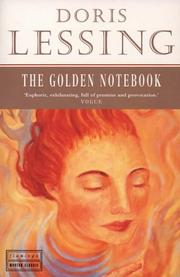 8. The Golden Notebook by Doris Lessing (1962). In her epic fusion of structural experiment and exhaustive realism, Lessing lays bare the splintered state of modern womanhood. In four separate notebooks, Anna Wulf records different aspects of her life: her consecutive and unfulfilling love affairs, her memories of Africa, her struggles with motherhood, and above all, her growing disenchantment with communism. Lessing’s novel foreshadowed the concerns of the women’s movement, becoming a major feminist text.
8. The Golden Notebook by Doris Lessing (1962). In her epic fusion of structural experiment and exhaustive realism, Lessing lays bare the splintered state of modern womanhood. In four separate notebooks, Anna Wulf records different aspects of her life: her consecutive and unfulfilling love affairs, her memories of Africa, her struggles with motherhood, and above all, her growing disenchantment with communism. Lessing’s novel foreshadowed the concerns of the women’s movement, becoming a major feminist text.
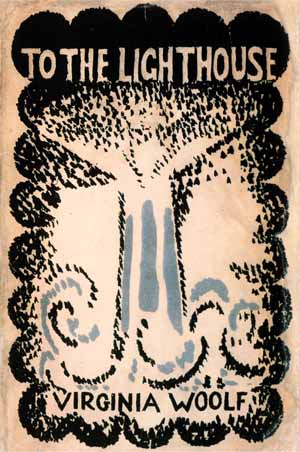 9. To the Lighthouse by Virginia Woolf (1927). The Ramsays and their eight children vacation with an assortment of scholarly and artistic houseguests by the Scottish seaside. Mainly set on two days ten years apart, the novel describes the loss, love, and disagreements of family life while reaching toward the bigger question—“What is the meaning of life?”—that Woolf addresses in meticulously crafted, modernist prose that is impressionistic without being vague or sterile.
9. To the Lighthouse by Virginia Woolf (1927). The Ramsays and their eight children vacation with an assortment of scholarly and artistic houseguests by the Scottish seaside. Mainly set on two days ten years apart, the novel describes the loss, love, and disagreements of family life while reaching toward the bigger question—“What is the meaning of life?”—that Woolf addresses in meticulously crafted, modernist prose that is impressionistic without being vague or sterile.
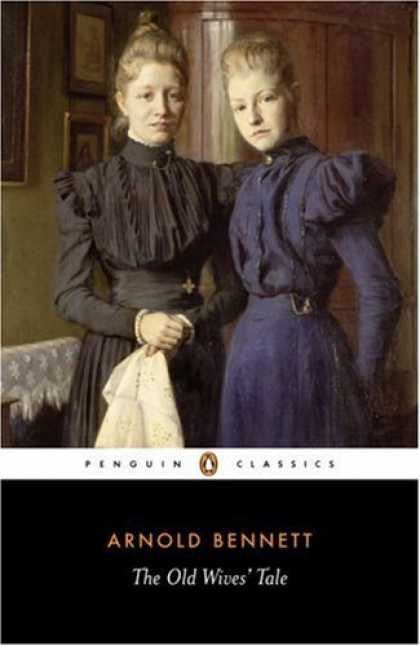 10. The Old Wives’ Tale by Arnold Bennett (1908). This is the tale of two sisters, shy Constance, who never strays from her rural English home, and adventurous Sophia, who marries and moves to Paris. Through absorbing depictions of their ordinary lives, which includes a masterful depiction of English provincial life and mores, Bennett suggests how character shapes destiny and how every destiny is fascinating.
10. The Old Wives’ Tale by Arnold Bennett (1908). This is the tale of two sisters, shy Constance, who never strays from her rural English home, and adventurous Sophia, who marries and moves to Paris. Through absorbing depictions of their ordinary lives, which includes a masterful depiction of English provincial life and mores, Bennett suggests how character shapes destiny and how every destiny is fascinating.